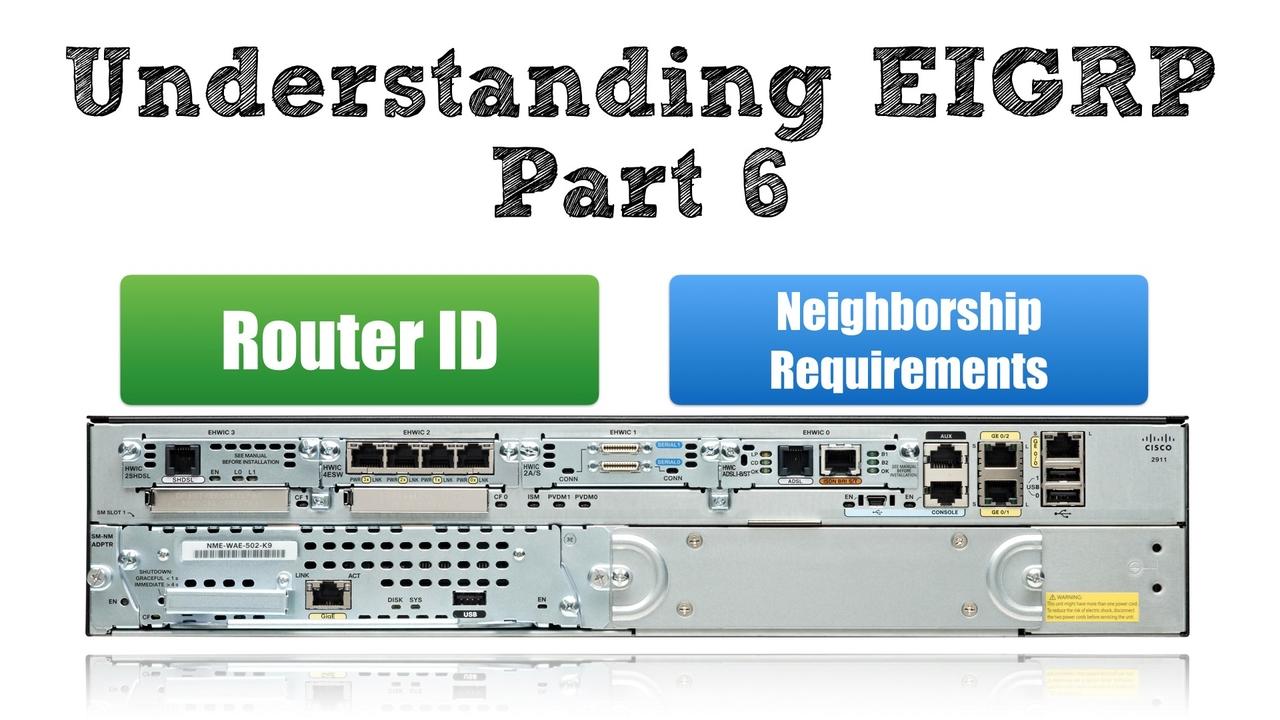Understanding EIGRP Part 6 (Router ID and Neighborship Requirements)
Feb 23, 2017
This blog post wraps up our series on Understanding EIGRP by discussing two final topics:
- The EIGRP Router ID
- EIGRP's Neighborship Requirements
Let's begin our discussion by considering the EIGRP router ID.
EIGRP Router ID
Each EIGRP-speaking router has an associated EIGRP router ID (RID). The RID is a 32-bit value written in dotted decimal format, like an IPv4 address. A router’s EIGRP RID is determined when the EIGRP process starts. Interestingly, EIGRP uses the same steps to RID calculation as does OSPF. The following list identifies these step, in sequential order:
Step 1. Use the configured RID value (using the eigrp router-id rid EIGRP router configuration mode command).
Step 2. If no RID is configured, use the highest IPv4 address on a loopback interface in the up/up state.
Step 3. If no loopback interface is configured with an IPv4 address, use the highest IPv4 address on a non-loopback interface.
Interestingly, while EIGRP requires a router to have a RID, the RID value plays a very trivial role in an EIGRP process. EIGRP neighbors can even have duplicate RIDs and still establish an EIGRP neighborship between them, although it’s a best practice to assign unique RIDs to EIGRP neighbors. However, before we overly minimize the RID, there is one very important time a router needs a unique router RID. Specifically, if we’re injecting external routes into an EIGRP routing process, the router performing that redistribution needs a unique RID.
Configuring and Verifying an EIGRP Router ID
To make your network addressing scheme more intuitive, you might choose to statically configure the EIGRP RID on a specific router. This can be done with the eigrp router-id rid command, as demonstrated on router R1 and shown in the following example:

Notice from the output in the above example that we’ve statically set router R1’s RID to 1.1.1.1. A couple of verification commands that allow us to view a router’s RID include: show ip eigrp topology and show ip protocols, as demonstrated in the following examples:


Neighborship Requirements
One of the main issues encountered when troubleshooting an EIGRP network is neighborship establishment. EIGRP has several requirements, as does OSPF. However, EIGRP and OSPF differ a bit on their neighborship prerequisites. As a reference, the following table lists and contrasts neighborship establishment rules for both EIGRP and OSPF.

Well, that's going to finish off our Understanding EIGRP series of blog posts. If you missed any of the previous installments, you can catch up here:
- Understanding EIGRP - Part 1 (Overview, Basic Configuration, and Verification)
- Understanding EIGRP - Part 2 (Neighborships and Metrics)
- Understanding EIGRP - Part 3 (EIGRP Timers)
- Understanding EIGRP - Part 4 (Passive Interfaces)
- Understanding EIGRP - Part 5 (Static Neighbors)
Of course, there is much more to learn about EiGRP, including EIGRP for IPv6 and configuring Address Families for EIGRP. If you'd like to watch me demonstrate those exciting topics for you, please check out my CCNP R/S (300-101) Complete Video Course.
I hope you enjoyed this series, and I wish you the best in your studies.
Kevin Wallace, CCIEx2 (R/S and Collaboration) #7945




